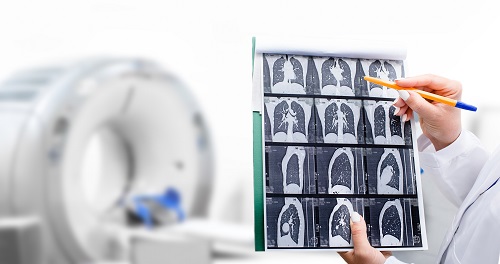Author: Lindsey Ulrich

"This expands the coverage of those who are at high risk for lung cancer to receive screening sooner in the hopes of detecting lung cancer at an earlier stage."
According to the Centers of Disease Control (CDC), lung cancer is the leading cause of cancer deaths in the United States, with cigarette smoking as the number one cause of lung cancer. Although many lung cancers are found in the late stages, making it more difficult to treat, the good news is a recent change in lung cancer screening guidelines can help detect lung cancer earlier for those at high risk.
In 2021, the U.S. Preventative Services Taskforce (USPSTF) updated its recommendations for lung cancer screening eligibility criteria. The recommendation nearly doubled the number of individuals eligible for screening by lowering the recommended age range and minimum pack-year smoking history. Earlier this year in 2022, the Centers of Medicare and Medicaid Services (CMS) updated its lung cancer screening eligibility guidelines for people covered by Medicare, based on the new USPSTF guidelines.
“The new guidelines lowered the age to 50 years old instead of 55, as well as reduced the pack-year smoking history from 30 to 20 pack-years,” said Becky Loomis, thoracic oncology nurse navigator at Karmanos Cancer Institute at McLaren Greater Lansing. “This expands the coverage of those who are at high risk for lung cancer to receive screening sooner in the hopes of detecting lung cancer at an earlier stage.”
The new guidelines also aim to reduce disparities and recommend more Black Americans and women for screening, both of whom have been considered to see greater impacts of tobacco use and lower rates of early diagnosis and survival.
Those considered high risk under the new guidelines include people 50-80 years of age with a 20-pack years or higher history of smoking (for example, smoking one pack of cigarettes per day for 20 years). This can include those who currently smoke or have quit within the last 15 years.
Individuals who are at high risk can qualify for low-dose CT lung screening. This screening is a CT image of the lungs that uses a lower amount of radiation than a standard CT scan. When detected early, lung cancer patients have more treatment options and a greater chance of survival.
The new state-of-the-art Karmanos Cancer Institute at McLaren Greater Lansing brings the most advanced cancer treatment and technology with a multidisciplinary approach to the greater Lansing community. This includes support and resources with the benefit of having a dedicated oncology nurse navigator, such as Loomis.
“I help facilitate the screening process and assist the patient throughout their journey. Whether it is to help set up appointments or schedule treatments after diagnosis, I am here as a resource to ensure patients are getting the best and fastest care,” said Loomis.
Karmanos Cancer Institute also provides resources for those who are current smokers wanting to quit.
High-risk patients should talk to their primary care provider about whether screening is right for them and if they meet the criteria. Learn more about Karmanos Cancer Institute’s Lung Cancer Screening Program.
Request a lung cancer screening appointment